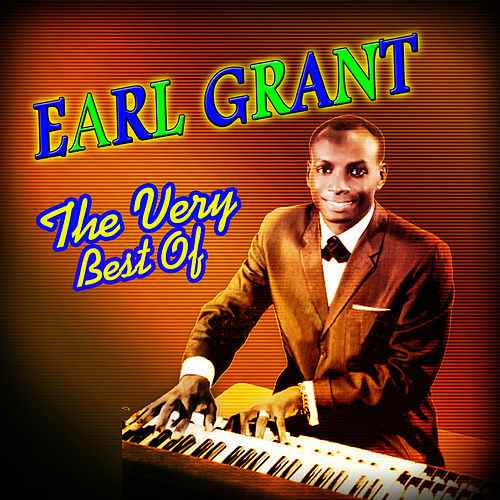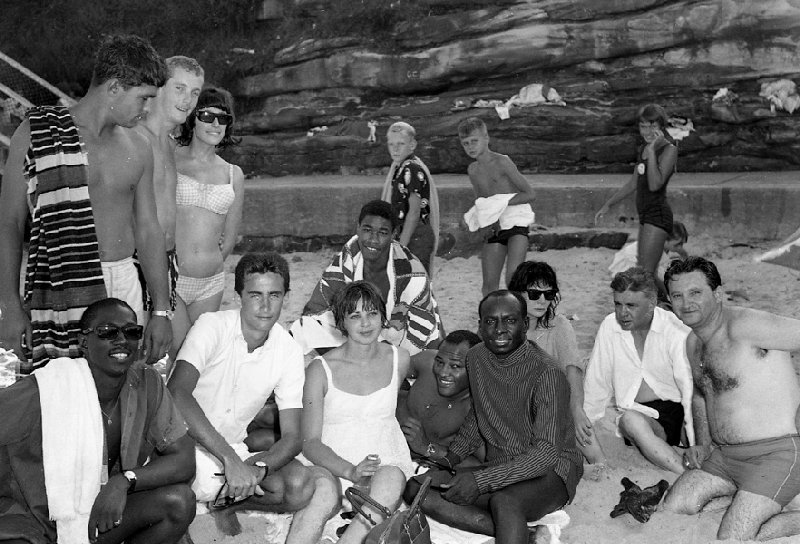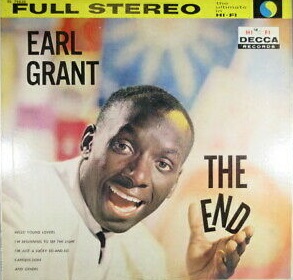Coogee Media
HISTORY | STORIES | BEYOND BLOG & CREATE PEOPLE |
Earl Grant: the Forgotten "King" of Sydney's Nightclubs
A regular visitor to Coogee Beach in the mid-1960s was the American musician Earl Grant. Grant was an accomplished jazz musician who sang, and played a number of instruments including the piano, trumpet and drums, but above all others, he was a virtuoso of the electric organ. Although the elaborate and multilayered organ renditions are not fashionable these days, in the late 1950s and 1960s they were a standard of night club performances and audiences were wowed by Grant's stellar performances. For a while in the 1960s he was a favourite Sydney performer.

Grant was born January 20, 1933 in Oklahoma City, Oklahoma, the son of a Baptist minister and one of twelve children. Grant began his music career at the age of four when he played the piano and organ at his father's services in his hometown of Idabel, Oklahoma. He then attended four music schools in Oklahoma and would eventually become a music teacher himself after graduating from the University of Southern California. He said that when he first started teaching at high schools, he was perturbed to find he was allocated to teaching chemistry, which he knew nothing of, but happily after about six months, he was assigned to teaching music which he did for about two years.
Performance Career He first gained national recognition at the Pigalee Club in Los Angeles, where the management was forced to expand club facilities three times to accommodate his fans. In 1957 Grant signed with Decca Records in Los Angeles. With Decca he produced his first single, The End, which was released in 1958. The End reached number seven on the Billboard Top 100 Chart. Grant's most popular song, Ebb Tide, was released in 1961 and gained gold-disc status as a single after it sold over one million copies. Grant recorded another five singles that would make the Billboard Top 100 Chart. He toured Japan, Mexico, Australia, Canada, and Europe as well as across the United States. Grant recorded thirty albums with Decca Records and all up had 50 record albums to his name. He also made a few appearances on film and television and sang the theme song for the 1959 film Tender is the Night.
Sydney Nightclub Star
According to the Australian Concert Tours 1950-1979 database, Grant had the following nightclub residencies In 1967 the Australian Bandstand host, Brian Henderson, described Grant as being the king of Sydney's nightclub scene, a most electrifying entertainer, an act to be seen live so that one could appreciate his great talent. Below is a link to his Sydney's performance:
Earl Grant Live Australian Bandstand 1967 Grant was a supporter of the American civil rights movement, and he told the Tribune reporter when interviewed, that he attended the 1963 March on Washington, "with everyone", presumably meaning other musicians, and then flew to Pasadena in California to attend a similar rally there the same night. He was a great believer in the value of education, because he said that it not only helped the oppressed black Americans get ahead, it also educated other Americans into the value of an equal society.
 Earl Grant and his colleagues at Coogee Beach in 1965
Sharp Dresser Grant was a very snappy dresser. He performed in well-tailored suits, and his feet pressing the organ's pedals could be seen in silk socks and shiny black patent shoes. In a US television interview he proudly showed off a fine suit and ensemble he said he had made in Sydney by "an Italian tailor". When Grant arrived in Sydney in February 1964, the Canberra Times reported that he came with a huge wardrobe of suits, shoes, shirts and ties, and a valet to look after them. It also reported that he kept fit by walking from Rushcutters Bay to Bondi Beach and back, as well as swimming at Coogee Beach.
Accidental Death Had it not been for his untimely death at a relatively early age, Earl Grant who was still in his musical prime would probably have made his annual migration to Sydney long after 1970, to the delight of audiences. 
References
The 1968 Earl Grant Television Interview Copyright © Coogee Media All rights reserved
|